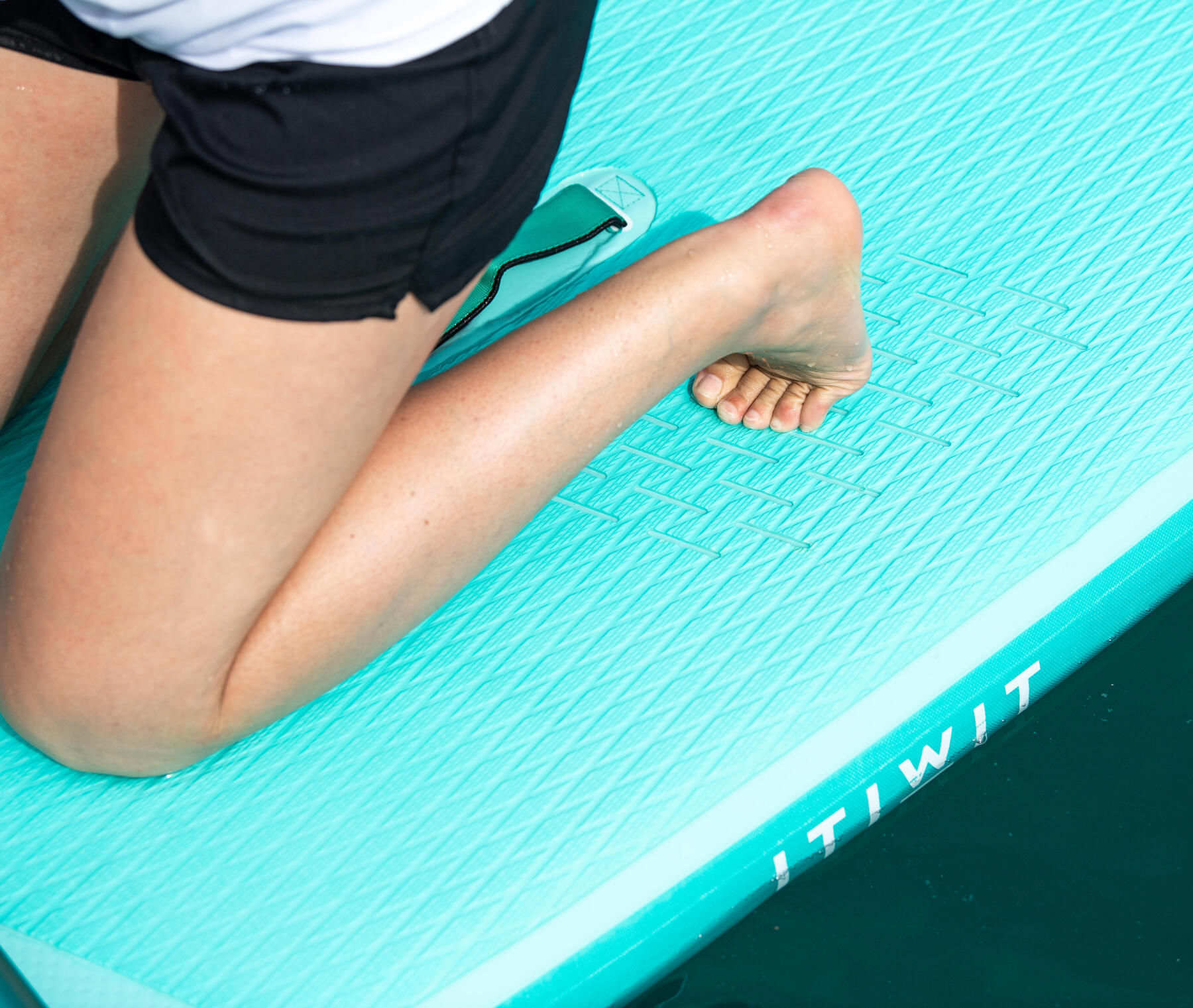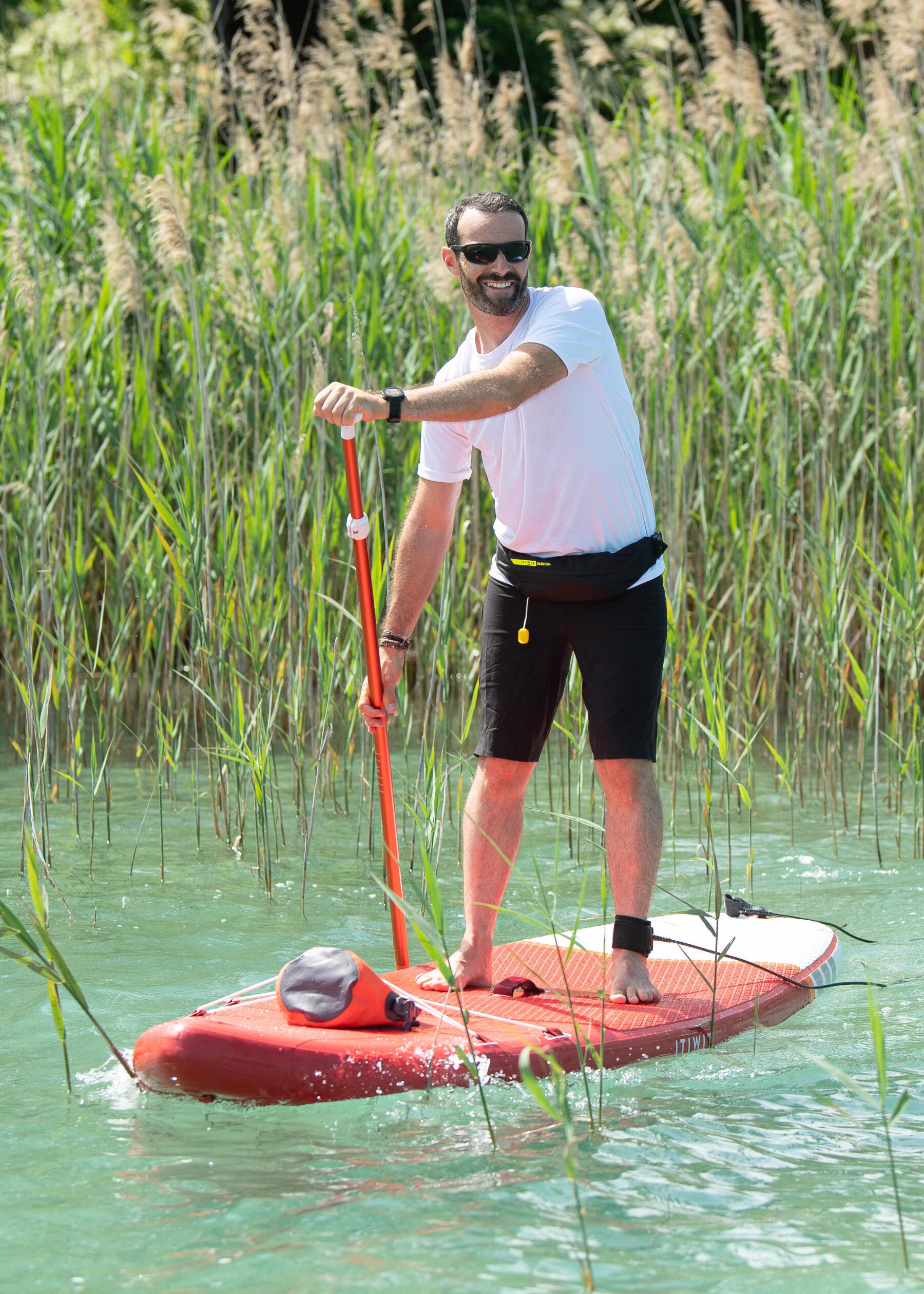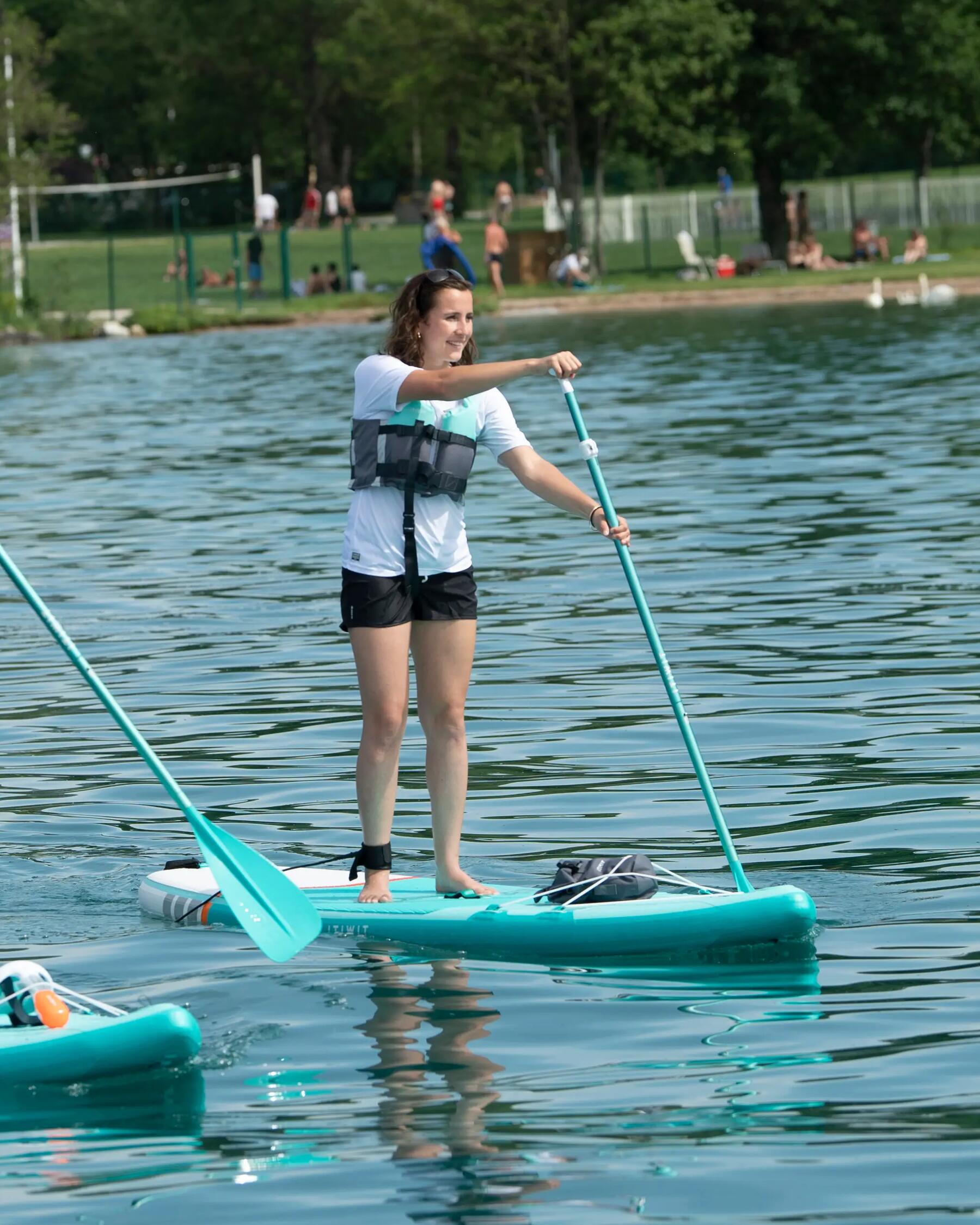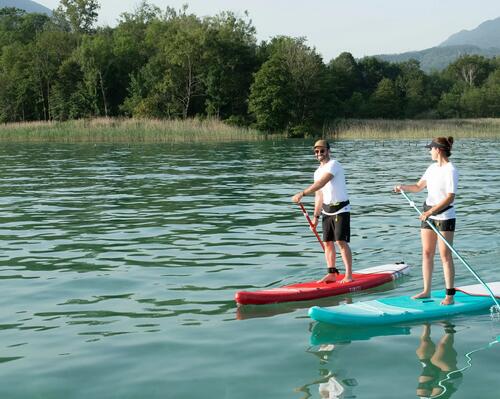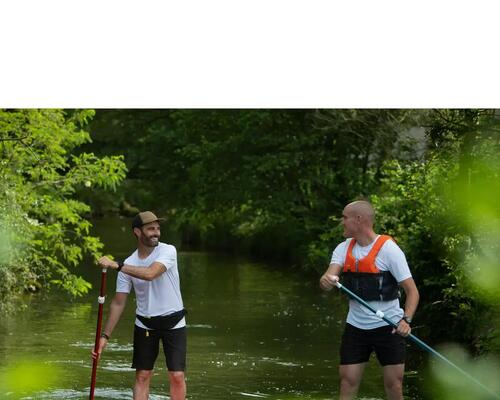You should paddle on both sides to go straight. If you start paddling on the right, your right hand is lower and on the paddle shaft. Your top hand is on the top of the grip. The angle of the paddle faces away from you. Try to keep your arms straight.
Push down on the paddle grip with your top hand. Plant the paddle by pushing the blade all the way under the surface, pull it back to your ankle, then out of the water.
At first, keep your strokes short and close alongside the board.
To go in a reasonably straight line, paddle about 4 or 5 strokes on one side, then switch to the other.
When you switch sides, you’ll reverse hand positions.



